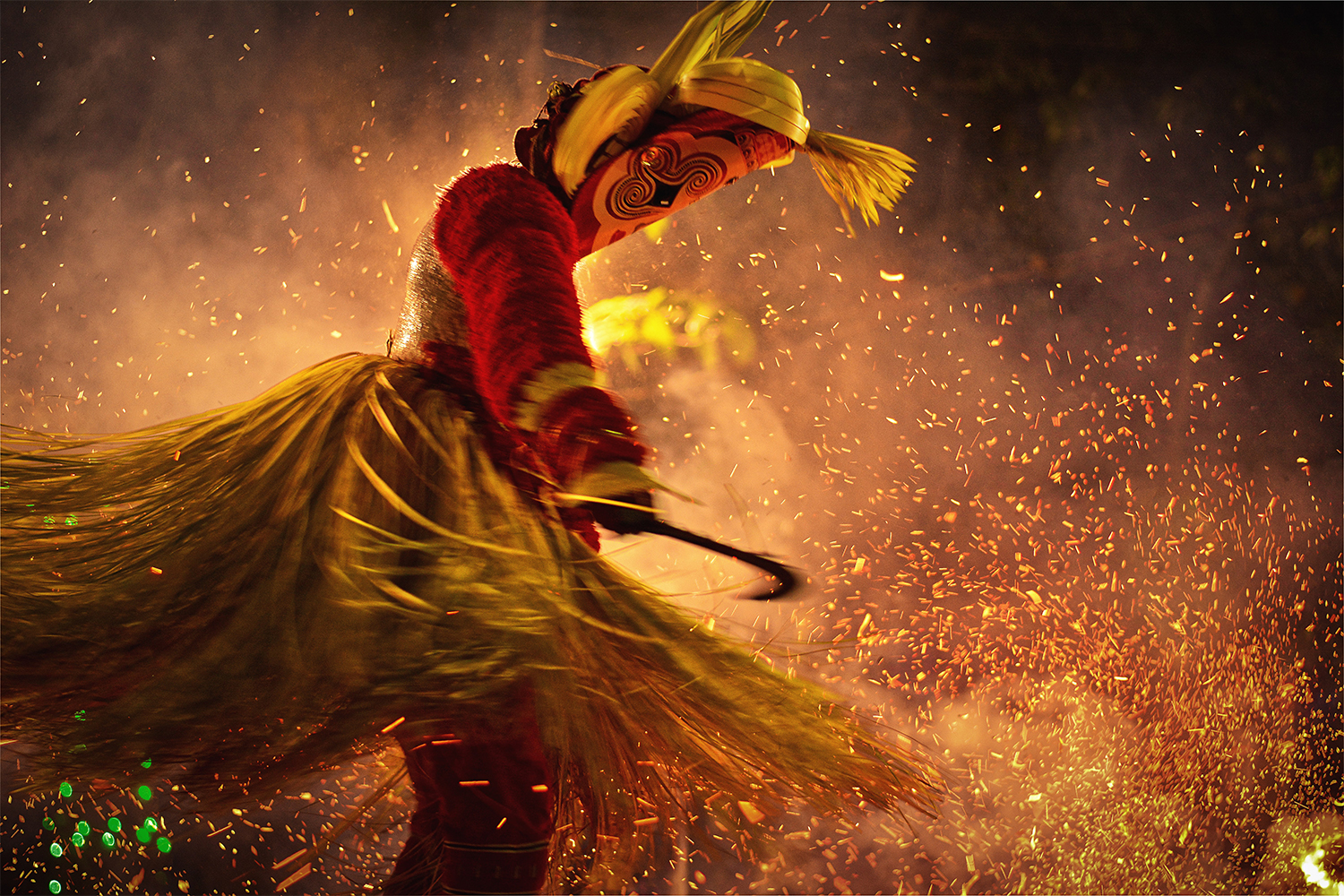No products in the cart.
Hinduism is not just a religion in India. It is a way of life. For Hindus, rituals are performed to bring spirituality to one’s life and to instill feelings of devotion and religion. The rituals are not only celebrated during the lifetime but continue after death, including rituals of burial and cremation. To Hindus, the Vedas – the oldest spiritual texts in the world – have shaped and influenced their practices. The Vedas are a collection of songs and rituals dating back thousands of years. These precious texts were passed on from generation to generation through oral tradition.

In the past, many Hindu traditions focused on the importance of performing tasks related to one’s social life. The four stages of life are as follows:
Brahmacharya – To get an education and develop a human character
Grihastha – Worldly pleasures and popular activities including marriage and work
Vanaprastha – Spiritual
Sannyasa – A life of thought
There are many ancient traditions that are not made today, as their meaning and practice have changed over the centuries. For example, in Vedic times, yajnas were associated with Karma and Dharma but are now associated with social activities.
Significance of Hindu Rituals
For Hindus, receiving the blessings of the Almighty is especially important when performing rituals. They believe that when God rejoices in their devotion, he puts his blessings upon them. Many Hindu rituals are performed in shrines such as temples or shrines, but some are performed at home.
As part of the family responsibilities, a devout Hindu is expected to perform daily rituals. Morning rituals may include bathing or purification, praying to the Sun 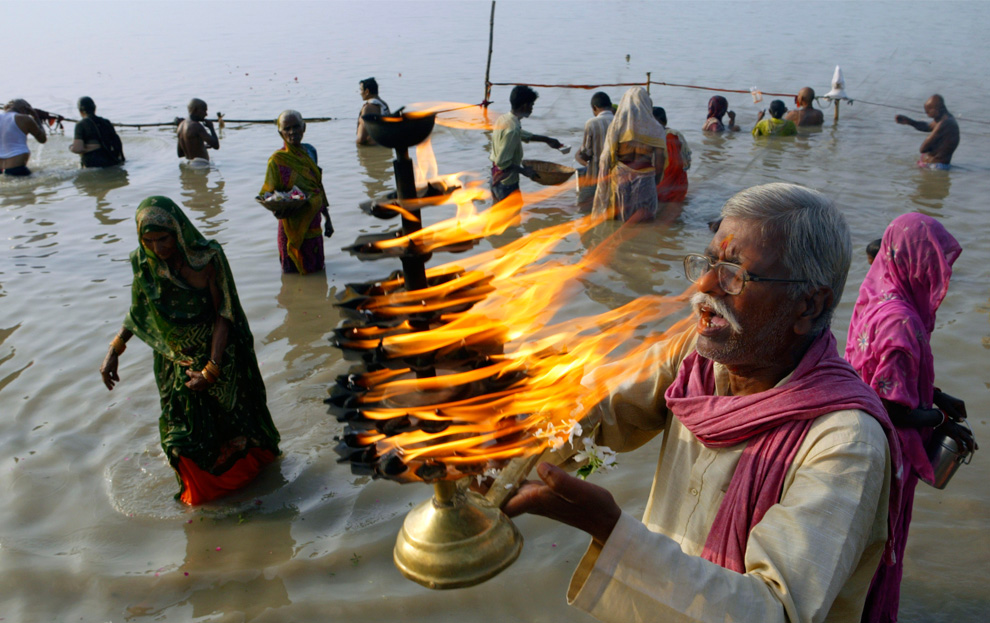 God, or Singing the Gayatri mantra. The most common rituals performed in all Hindu families are puja, meditation, silent prayer, yoga, recitation of texts from the Bhagavad Gita or bhajans, reading religious literature, participating in Satsang (prayer meetings), performing charitable work, visiting the temple, and singing. the name of their beloved God. It is through these rituals, prayers, and holy ceremonies that Hindus honor God.
God, or Singing the Gayatri mantra. The most common rituals performed in all Hindu families are puja, meditation, silent prayer, yoga, recitation of texts from the Bhagavad Gita or bhajans, reading religious literature, participating in Satsang (prayer meetings), performing charitable work, visiting the temple, and singing. the name of their beloved God. It is through these rituals, prayers, and holy ceremonies that Hindus honor God.
Prayers or Pooja are an important part of a devout Hindu life. They perform these prayers under the auspices of the Hindu or Brahmin priests. After each pooja, a sacred offering (or Prasad) is made to God. Such offerings are intended to be made without claiming the same benefits as a token of service to their Almighty. Hindus believe that practicing these rites helps them to progress spiritually.
There are different form of performing Hindu Rituals:
Yajna – While performing yajna, offerings were made to various deities under the help of the priests. A small sacred fire is lit and there are offerings such as food grains, ghee, and vegetables. Mantras are sung simultaneously to appease gods like Agni, Indra, and Varuna. They are usually designed for family well-being, inviting rain, and embracing peace and prosperity. Some Yajnas are performed for a few hours and others for a few weeks.
Japa – Japa means the recitation of the divine name, either silently or aloud. Practice involves the continuous repetition of God’s name in order to purify the mind and fill the mind with spiritual power. This type of regular singing can create emotional and physical vibrations and can lead to spiritual transformation. Japa should be done with pure love for God and not expecting anything in return.
“Achaaryaath paadam aadatthe
paadam sishya swamedhayaa
paadam sa brahmachaaribhya
sesham kaala kramena cha”
Its is a very important advice which was given to smruthies. It means that one can only get one quarter
information from Achaarya – teacher, one quarter for self-reflection, one quarter negotiating with others and the last quarter during the process of integrating the process, removal, modification, and modification of known aachaaraas or new aachaaraas.
“Aachaaraath labhathe hi ayu:
aachaaraath dhanamakshayam
aachaaraath labhathe suprajaa:
aachaaro ahanthya lakshanam”
Aachaaraas are followed by mental and physical health and longevity; Aachaaraas are followed by prosperity and wealth; The Aachaaraas are followed by a strong family and social enslavement and following the Aachaaraas provide a good personality, dharmic vision and vision, says our dharmasaastra.
Why do we light a lamp?
In almost every Indian home a lamp is lit daily in front of the Lord’s altar. In some houses it lighted in the morning, sometimes, twice a day – morning and evening –  and a few are saved continuously – They repair Deepa. All good works begin with the lighting of a lamp, which is usually kept at all times. Light symbolizes knowledge, and darkness – ignorance. The Lord is “the goal of knowledge” (Chaitanya) who is the source, burner and illuminator of all information. So the light is worshiped as the Lord Himself. Knowledge removes ignorance as light removes darkness. And the information is permanent internal wealth that can be achieved with all external success. So we light a lamp bowing to knowledge as the greatest form of wealth. Why not load a lamp or a tube lamp? That too would remove the darkness. But traditional oils The lamp has other spiritual significance. The oil or ghee of the lamp symbolizes our vaasana or the wrong tendency and thread, ego. When spiritual knowledge is enlightened, the vassals fades slowly and the ego also eventually disappears. The flame of a lamp is always burning up. Similarly, we need to acquire such knowledge that can lead to higher views.
and a few are saved continuously – They repair Deepa. All good works begin with the lighting of a lamp, which is usually kept at all times. Light symbolizes knowledge, and darkness – ignorance. The Lord is “the goal of knowledge” (Chaitanya) who is the source, burner and illuminator of all information. So the light is worshiped as the Lord Himself. Knowledge removes ignorance as light removes darkness. And the information is permanent internal wealth that can be achieved with all external success. So we light a lamp bowing to knowledge as the greatest form of wealth. Why not load a lamp or a tube lamp? That too would remove the darkness. But traditional oils The lamp has other spiritual significance. The oil or ghee of the lamp symbolizes our vaasana or the wrong tendency and thread, ego. When spiritual knowledge is enlightened, the vassals fades slowly and the ego also eventually disappears. The flame of a lamp is always burning up. Similarly, we need to acquire such knowledge that can lead to higher views.
When we light a lamp, we pray as follows:
Deepajyothi parabrahma
Deepa sarva tamopahaha
Deepena saadhyate saram
Sandhyaa deepo namostute
It means, I bow to the light of dawn; his light is the Knowledge System (Supreme Lord), who removes the darkness of ignorance and all that can be accomplished through life.
Why do we do namaste?
When Indians greet they say namaste to each other. Both hands are put together in front of chest and head bend as you say the word namaste. This greeting is for everyone – the people younger than us, our peers, older than friends, even strangers with us. There are five types of traditional formal greetings included in their shaastras namaskaram is another. This is understood as bowing but actually refers to  paying homage as we do today when we greet each other with a smile. Namaste can be just a formal or formal greeting, a cultural meeting or an action to worship. Yet there is more to it than meets the eye. In Sanskrit namah + te = namaste. It means – I bow to you – greeting, greeting or praying to you. Namaha it can also be literally translated “na ma” (not mine). It has spiritual significance for to deny or diminish one’s ego in front of another. The real meeting between people is the integration of their ideas. When we greet another, we do so with namaste, meaning, “may our minds come together,” which is reflected in the folded palms. placed in front of the chest. Bowing the head is a grace to stretch friendship in love and humility.
paying homage as we do today when we greet each other with a smile. Namaste can be just a formal or formal greeting, a cultural meeting or an action to worship. Yet there is more to it than meets the eye. In Sanskrit namah + te = namaste. It means – I bow to you – greeting, greeting or praying to you. Namaha it can also be literally translated “na ma” (not mine). It has spiritual significance for to deny or diminish one’s ego in front of another. The real meeting between people is the integration of their ideas. When we greet another, we do so with namaste, meaning, “may our minds come together,” which is reflected in the folded palms. placed in front of the chest. Bowing the head is a grace to stretch friendship in love and humility.
The spiritual meaning is even deeper. Life force, divinity, Personality or Lord to me it is the same in all. Seeing this unity and meeting of the palm trees, we salute them the head bowed the Deity to the person we meet. That is why sometimes, we close our eyes as we make a namaste to a noble person or to the Lord – as if we were looking inward. Action in general accompanied by words such as “Ram Ram,” “Jai Shri Krishna”, “Namo Narayana”, “Jai Siya Ram”, “Jai Siya Ram”, “Om Shanti” etc – signifying the recognition of this deity.
Why do we not touch papers, books and people with the feet?
To the Indians, knowledge is sacred and divine. So it should  always be given respect. Today we classify subjects as sacred and secular. But in ancient India all subjects – academic or spiritual – it was considered divine and taught by the guru to gurukula. The tradition of not stepping on teaching aids is a common reminder of a higher position provided with information on Indian culture. From an early age, this wisdom is deeply rooted in us respect for literature and education. This is also the reason why we serve books, cars and instruments once a year on the day of Saraswathi Pooja or Ayudha Pooja, dedicated to Goddess of Learning. In fact, each day before we start our study, we pray:
always be given respect. Today we classify subjects as sacred and secular. But in ancient India all subjects – academic or spiritual – it was considered divine and taught by the guru to gurukula. The tradition of not stepping on teaching aids is a common reminder of a higher position provided with information on Indian culture. From an early age, this wisdom is deeply rooted in us respect for literature and education. This is also the reason why we serve books, cars and instruments once a year on the day of Saraswathi Pooja or Ayudha Pooja, dedicated to Goddess of Learning. In fact, each day before we start our study, we pray:
“Saraswati namasthubhyam
Varade kaama roopini
Vidyaarambham karishyaami
Sidhirbhavatu me sadaa”
which means
O Goddess Saraswati, the giver of
Boons and fulfiller of wishes,
I prostrate to You before
starting my studies.
May you always fulfill me?
Fasting as Hindu Ritual
Many devout Indians fast or regularly fast during festivals. On such days they do not eat at all, eat once or make fruit or special snacks. Sanskrit fasting is known as upavaasa. Upa means “near” + vaasa 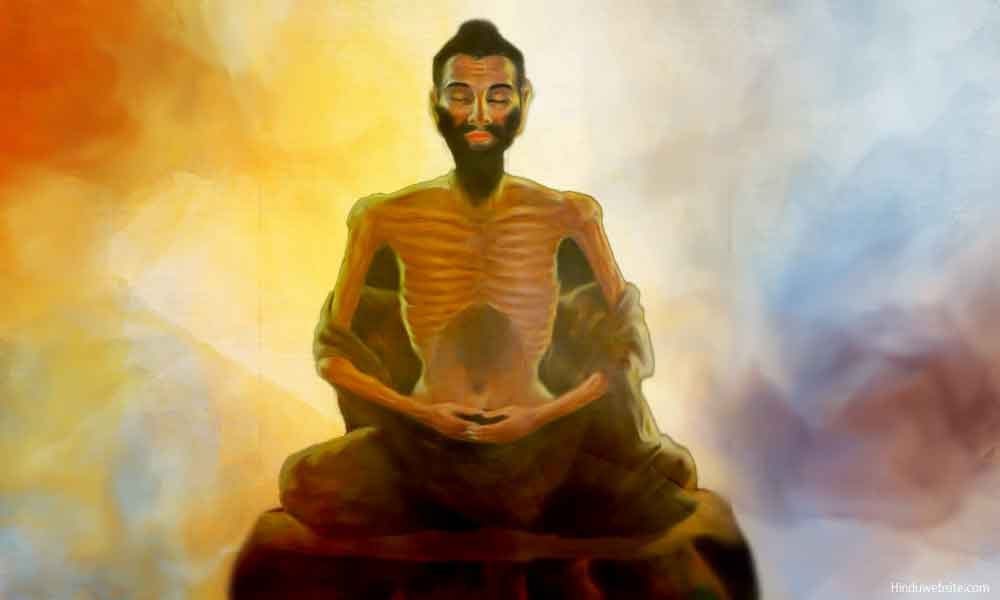 means “to stay”. Upavaasa therefore it means to stay close (Lord), which means to gain intimate intimacy and the Lord. So what does paavaasa have to do with food? Most of our time and energy is spent buying food, preparing food, cooking, and eating digestion. Certain foods cause our minds to become dull and dizzy. So on certain days one decides to save time and save energy by eating a simple, easy meal or complete abstinence from food so that his mind is alert and clean. Mind, otherwise busy with the idea of food, she now has good thoughts and lives with the Lord. As a form of self discipline, it is often followed by joy.
means “to stay”. Upavaasa therefore it means to stay close (Lord), which means to gain intimate intimacy and the Lord. So what does paavaasa have to do with food? Most of our time and energy is spent buying food, preparing food, cooking, and eating digestion. Certain foods cause our minds to become dull and dizzy. So on certain days one decides to save time and save energy by eating a simple, easy meal or complete abstinence from food so that his mind is alert and clean. Mind, otherwise busy with the idea of food, she now has good thoughts and lives with the Lord. As a form of self discipline, it is often followed by joy.
And the whole system needs a break and a redesign to work properly. Relax and change. Eating during fasting is very good for the digestive system and the whole body. The more you indulge the senses, the more they carry out their demands. Fasting helps us to be we must cultivate self-control, subdue our desires, and direct our thoughts toward it in peace.
Fasting should not cause us to become weak, irritable, or indulge in self-indulgence. This happened when there is no good goal after fasting.
The Bhagavad-Gita encourages us to eat right – not too much or too little – yuktaaahaara and to eat simple, pure and healthy (saatvik foods) even if we do not fast.
Ringing bells at temples
To awake the Lord? But the Lord is not sleeping. Are you letting the Lord know that we have arrived? He does not need to be told, as He knows everything. Is it a way to seek permission to enter His place? Coming home so entry does not require permission. The Lord he always welcomes us. Now why are we crying? The ringing of a bell produces what is considered a pleasant sound. Produces I noise Om, the name of the Lord of the universe. 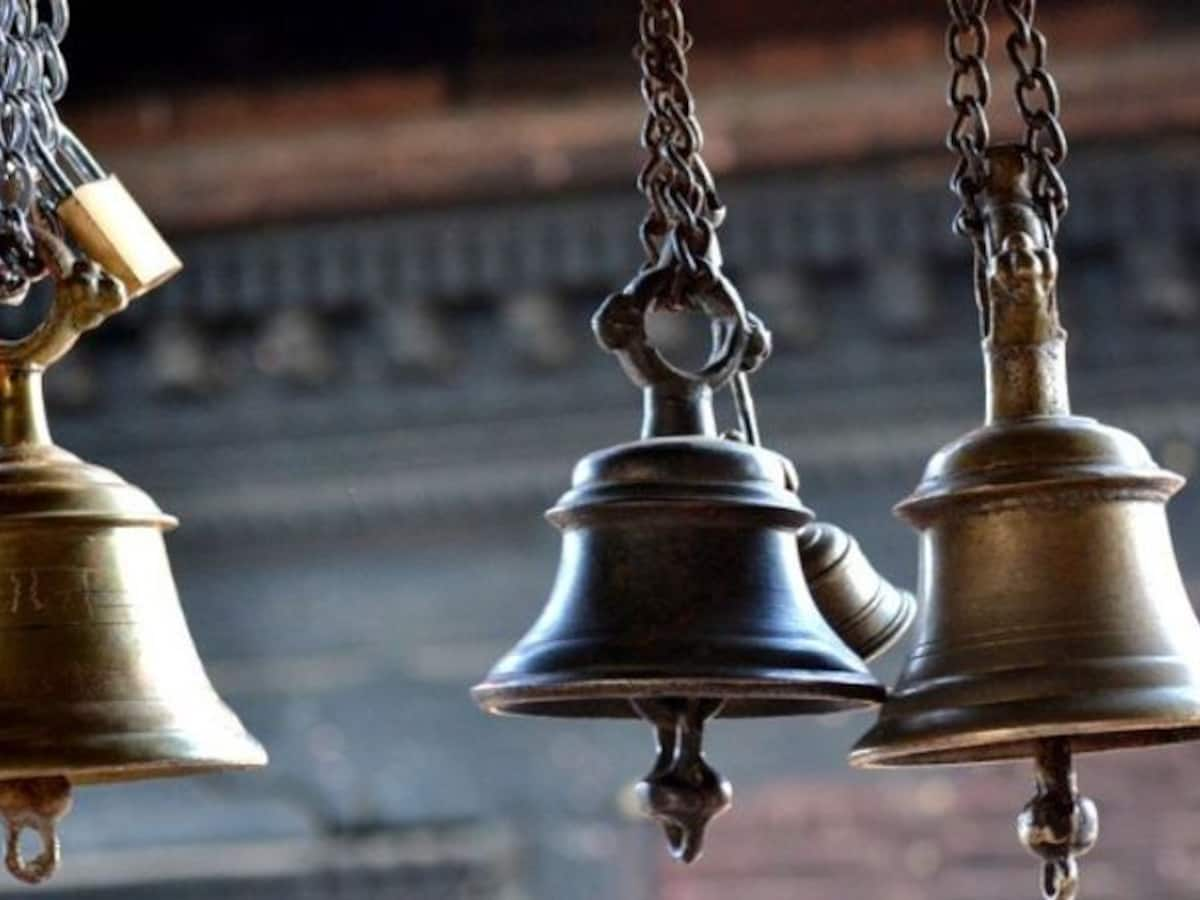 There should be glamorous inside too outside, to gain the vision of the Lord of all goodness. Even if we do a traditional arat, we ring the bell. Sometimes it is accompanied by beautiful conch sounds and other musical instruments. Additional value of ringing metal, conch and other instruments help to swallow anything wrong either unnecessary noises and remarks that may disturb or disturb the worshipers zeal for dedication, concentration and inner peace. As we begin the daily ritual (pooja) we ring the bell, we sing:
There should be glamorous inside too outside, to gain the vision of the Lord of all goodness. Even if we do a traditional arat, we ring the bell. Sometimes it is accompanied by beautiful conch sounds and other musical instruments. Additional value of ringing metal, conch and other instruments help to swallow anything wrong either unnecessary noises and remarks that may disturb or disturb the worshipers zeal for dedication, concentration and inner peace. As we begin the daily ritual (pooja) we ring the bell, we sing:
“Aagamaarthamtu devaanaam
gamanaarthamtu rakshasaam
Kurve ghantaaravam tatra
devataahvaahna lakshanam”
which means
I ring this bell indicating
the invocation of divinity,
So that virtuous and noble forces
enter (my home and heart);
and the demonic and evil forces
from within and without, depart.
Most important part- Why do we do aarati?
Near the end of all the traditional worship (pooja or bhajan) of the Lord or acceptance a venerable or holy guest, performing ararat. This is always accompanied by the cry of instrument and sometimes with singing, playing musical instruments and clapping. It is one of the sixteen steps (shodasha upachaara) 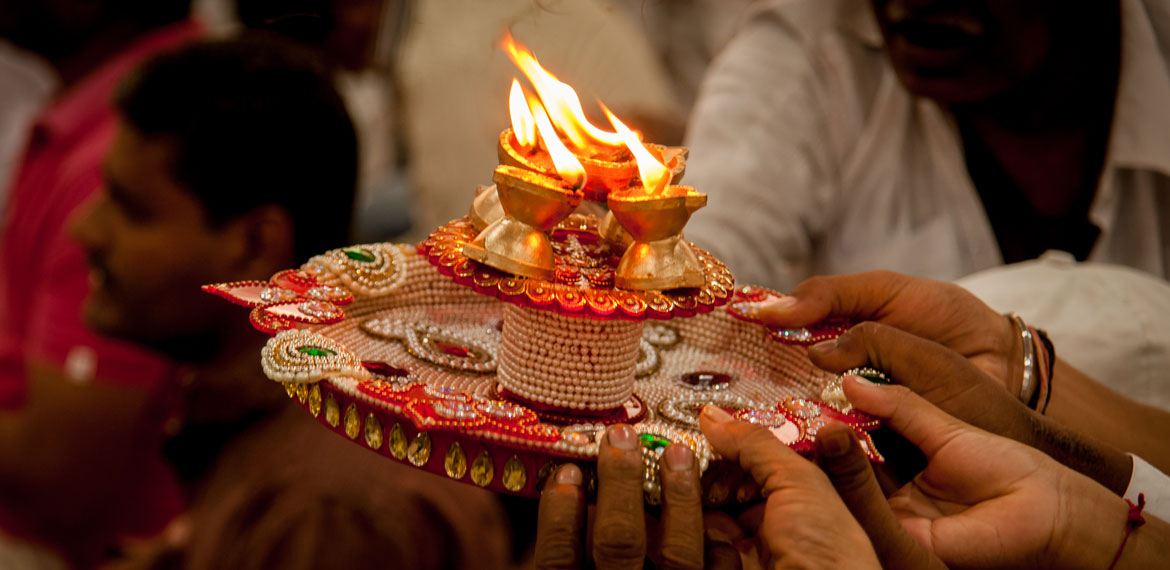 of pooja culture. It’s called a flashlight in the right hand, which rotates it around the clock to illuminate the whole character of the Lord. Each part is revealed individually and with the whole character of the Lord. As the light flashes we offer mental and physical prayers or simply look for the good in others Lord, the lamp is lit. At the end of the ararat we put our hands on flame and lightly touch our eyes and over the head. We have seen and participated in this practice since childhood. Let’s find out why arati?
of pooja culture. It’s called a flashlight in the right hand, which rotates it around the clock to illuminate the whole character of the Lord. Each part is revealed individually and with the whole character of the Lord. As the light flashes we offer mental and physical prayers or simply look for the good in others Lord, the lamp is lit. At the end of the ararat we put our hands on flame and lightly touch our eyes and over the head. We have seen and participated in this practice since childhood. Let’s find out why arati?
After serving the Lord of love – to make biscuits, to decorate a statue once we offer fruits and delicacies, and we see Jehovah’s goodness in all his glory. Our minds it is focused on each member of the Lord as the lamp illuminates. It is as if you were silent and opened your eyes to meditate on His goodness. Singing, clapping, ringing, etc. it means happiness once beauty, consistent with the Lord’s vision. Aarati is usually made of camphor. This has important spiritual significance. Camphor once loaded, it burns on its own without leaving a trace. It represents our environment inclination (vaasanas). When the fire of knowledge is lit up for the Lord (Truth), our vultures then burn themselves down, leaving no trace of pride it creates in us a sense of individuality that keeps us separate from the Lord. And while the camphor burns to reflect the glory of the Lord, it gives off a sweet fragrance even in time it sacrifices itself. In our spiritual development, as we work for the guru and the community, we should by voluntarily giving of ourselves and all that we have, to spread the “perfume” of love to all. Sivame wait a long time to see the enlightened Lord but when the aarati is actually done, ours eyes automatically close as if looking inside. This means that each of us is a temple of the Lord.
/GettyImages-134642772-591a84865f9b58f4c03a7f2e.jpg) Just as the priest reveals the Lord’s character clearly with the flame of the ararat, so does the guru he reveals the divinity within each of us with the help of the “flame” of knowledge (or I the light of spiritual knowledge). At the end of the amateur, we put our hands on the fire again then touch our eyes even above the head. It means – may the light shine Lord, enlighten my vision; may my vision be divine and my thoughts be beautiful and beautiful. The philosophical meaning of the art goes forward. The sun, moon, stars, lightning and fire are natural sources of light. The Lord is the source of this wonderful miracle the whole place. It is because of Him alone that everything else exists and shines. As we enlighten the Lord with flame of ararat, we turn our attention to the source of all light, which symbolizes knowledge and health.
Just as the priest reveals the Lord’s character clearly with the flame of the ararat, so does the guru he reveals the divinity within each of us with the help of the “flame” of knowledge (or I the light of spiritual knowledge). At the end of the amateur, we put our hands on the fire again then touch our eyes even above the head. It means – may the light shine Lord, enlighten my vision; may my vision be divine and my thoughts be beautiful and beautiful. The philosophical meaning of the art goes forward. The sun, moon, stars, lightning and fire are natural sources of light. The Lord is the source of this wonderful miracle the whole place. It is because of Him alone that everything else exists and shines. As we enlighten the Lord with flame of ararat, we turn our attention to the source of all light, which symbolizes knowledge and health.
And the sun is the supreme deity of wisdom, the moon, that of mind, and fire, that of speech. The Lord is the highest consciousness that enlightens all. Without Him, wisdom cannot think, and the mind cannot hear or language can speak. The Lord is beyond intellect, intelligence and speech. How can these limited weapons illuminate the Lord?
Therefore, as we do the aarati we sing;
“Na tatra suryo bhaati na chandra taarakam
Nemaa vidyuto bhaanti kutoyamagnib
Tameva bhaantam anubhaati sarvam
Tasya bhasa sarvam idam vibhaati”
Meaning
He is there where the sun does not shine,
Nor the moon, stars and lightning.
then what to talk of this small flame (in my hand),
Everything (in the universe) shines only after the Lord,
And by His light alone are we all illumined.
The 10 Scriptural Samskaras
There are fifty-two Samskaras. Of these, ten are significant. The ten most commonly recognized Samskaras principals are: Garbhadana, Pumsavana, Simantonnayana, Jatakarma, Namakarana, Annaprasana, Chudakarma, Upanayana, Samavartana and Vivaha. Of the ten, only some are done now. Some Samskaras are all about childhood and childhood. Other celebrations can be held daily or on special occasions. Thus the whole Hindu life is consecrated and protected from birth to the grave.
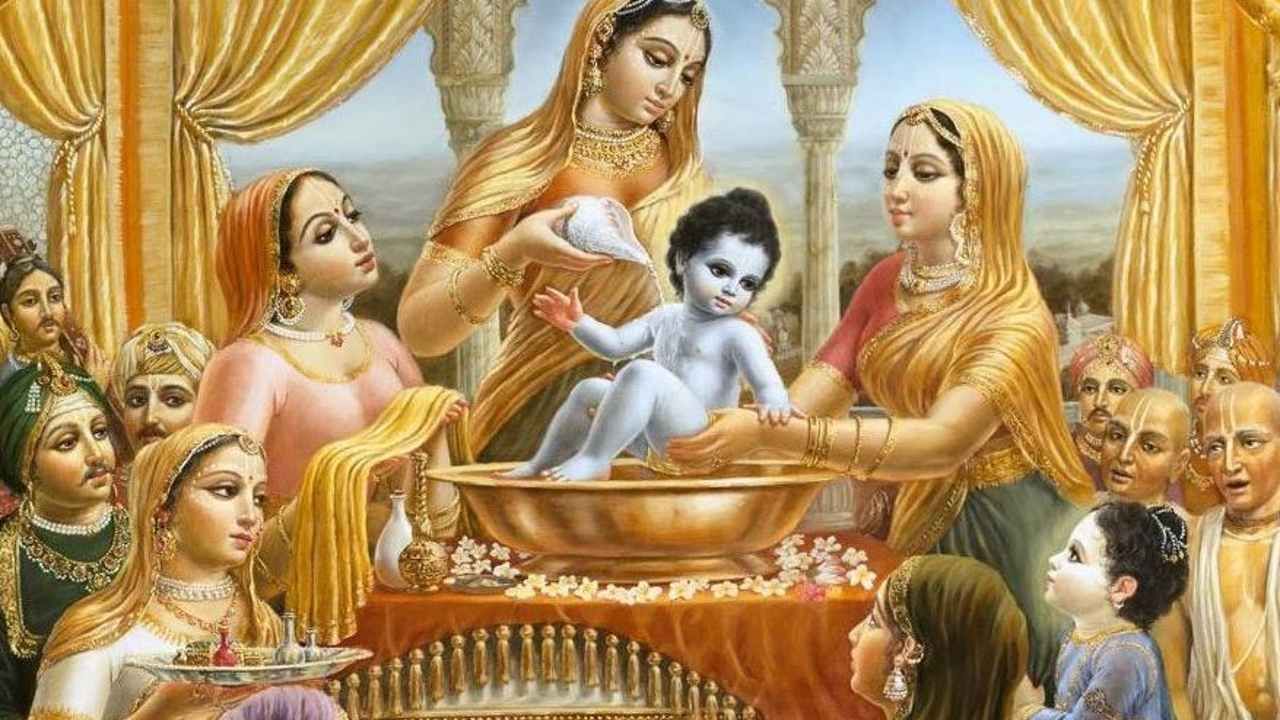
Garbhadana
Garbhadana sanctifies the act of creation. The husband earnestly prays fervently for the child to be conceived. He recites the sacred Mantras during the Ritu-Santi ceremony or weddings. A new baby gets pregnant during the Mantras earthquake. Positive ideas are impressive to the embryonic brain cells. To the true Hindu who is endowed with pure wisdom and proper understanding, sexual relations are not just for fun. He uses the power of God, the creative force, which is essential for building the human body. Husband and wife should be happy and dignified when they have sex. When their minds are disturbed or disturbed, or when there is anger or hatred, they should avoid cooperation. They should read the scriptures. If they have the image of Arjuna, they will have a wise and intelligent son. If they have the image of King Buddha, they will give birth to a merciful son and other good qualities. If they have a picture of Dhanvantari, they will have a son who will become a famous Ayurvedic doctor. If they think of Surya or the Sun God, they will give birth to a glorious and glorious son.
Pumsavana
In the third month, Pumsavana was made with Mantras. The baby food sheath and baby vial-sheath formed.
Simantonnanayana
Simantonnanayana was performed in the seventh month with the recitation of the Veda Mantras. This protects the mother from negative influences and gives life to the baby. The top three Samkaras protect the mother and baby. The baby’s body grows well. The harmonious vibration set by Mantras repetition and ceremonial performance helps to shape the baby’s body well.
 Jatakarma
Jatakarma
The next Samskara, a ceremony performed immediately after the birth of a child, Jatakarma. A father welcomes his newborn baby. He prays for its longevity, wisdom and well-being, and provides it with honey and butter.
Namakarana
Then comes a Namakarana or naming ceremony. A newborn baby is named on the tenth, eleventh or twelfth day by the recurrence of Mantras.
Annaprasana
Annaprasana arrives in the sixth month when the baby is given solid food for the first time. Mantras are recited and offerings are offered to various deities.
Chudakarma
Chudakarma, a tonsure or shaving of the head, is performed in the first or third year. The ceremony of Karnavedha or ear piercing is performed in the fifth or seventh year or at the end of the first year with Chudakarma. The baby’s body is protected and adapted to these ceremonies. Any genetic defect resulting from sperm and embryonic defects is removed. Vidyarambha is also another Samskara. The alphabet is taught to the child. This is also known as Aksharabhyasa. These Samskaras are related to the stage of a child’s life.
Upanayana
The most important event that marks the beginning of the next phase of life — the new phase — is the Upanayana. Upanayana is the most important Samskara. It is a milestone in a child’s life. His second birth or spiritual birth. The word Upanayana means zoom.
Navaratri or 9-day worship of Devi
Religious ceremonies, traditional worship and the Vratas, at times, have more than one significance. Apart from being a praise to the Godhead, it is a reminder of the dynamic, figurative events in which they are interpreted from a spiritual perspective, and are important indicators that guide Jiva on his way to Perfection.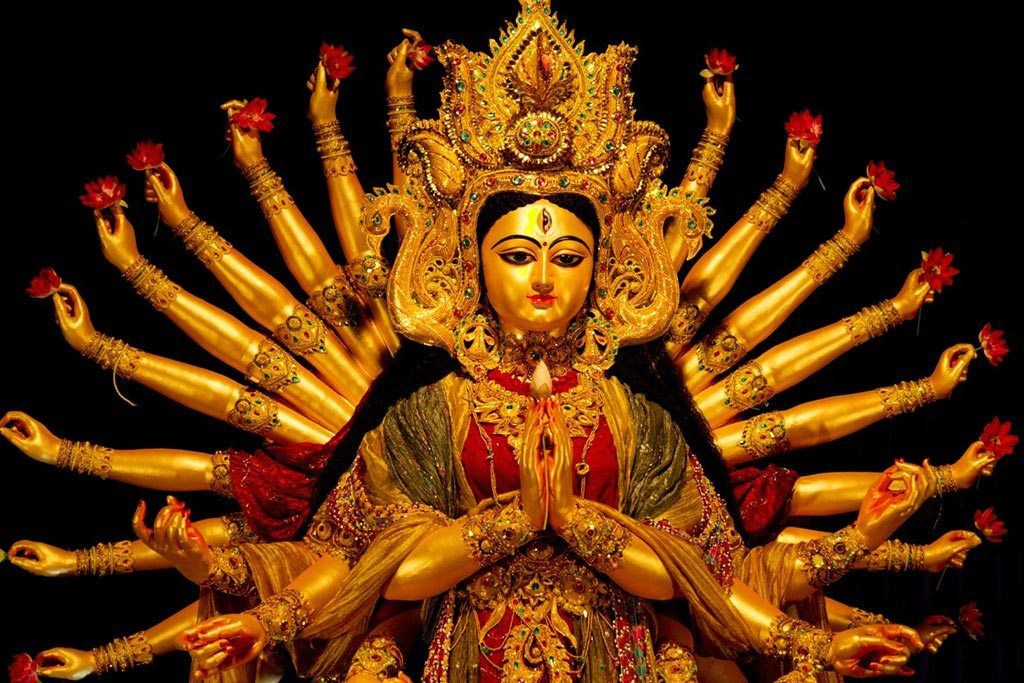
Outside, the nine-day worship of Devi or Mother, known as Navaratri Puja, is a tribute to Vijaya-Utsava. The nine-day victory is given to Mother by His successful struggle with the fearsome demons led by Sumbha and Nisumbha. However, for the spiritually inclined person in his Sadhana life, the special division of Navaratri into three-day sets of praise for the various aspects of the Supreme Goddess is a very beautiful, yet practical truth, to be revealed. In its cosmic form, it expresses the stages of human conversion to God, from Jivahood to Sivahood. In each of these passages, it shows the course to be taken by his spiritual Sadhana.
Now, the main purpose of being present is to see the eternal identity of the Supreme Spirit. It is growing into the image of the Godhead. The Most High represents the highest perfection. Spotless purity, Niranjana. To see your identity with That, to gain union with That, to really grow up to be like God. Therefore, Sadhaka has the first step in removing countless impurities and invisible elements, which have stuck to him in his compound state. Then he must acquire good qualities and godly qualities. Thus pure and full of Satattva, Knowledge shines upon him like the radiant rays of the sun upon the crystal clear waters of a perfectly calm lake.
This arrangement also has special implications for the spiritual evolution of the aspirant. It identifies the stages of evolution that are important to all Sadducees, which everyone must go through. One naturally leads to another, and for a while this can lead to tragic failure. Today, many inexperienced Sadhakas are directly involved in the distribution of Knowledge without the precursors of Daivi Sampat, and they complain that they are not progressing along the way. How can they? Knowledge will not decrease until the filth is washed away and the purity is improved. The Satvvic plant cannot grow on dirty soil.
Follow this setting and your efforts will be rewarded with guaranteed success. This is your way. There is no other way to be saved. Destroy all the bad qualities and improve their opposite qualities. With this process you will soon bring yourself to that perfection that can culminate in your identity with Brahman, which is your goal. Then all knowledge will be yours, you will know everything and you have omnipotence, and you will feel your omnipresence. You will see them in everything. You will be Jivanmukta. You will gain eternal victory over the wheel of birth and death, over the demon of Samson. There will be no more pain, no more sorrow, no more birth, no more death in you. Victory, victory be yours!
Glory be to the Holy Mother! Let Him take you, step by step, take you to the top of the spiritual ladder and connect you with the Lord !!

